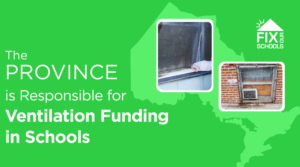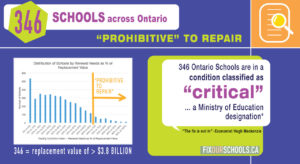NO RESEARCH, DATA, OR SCIENCE AS YET TO SUPPORT EXPANDING ONLINE LEARNING
As COVID-19 numbers in Ontario have been growing exponentially, and our hospital ICU capacity approaching its limits, students, families, teachers, principals, education workers, and school boards have been anxiously tracking whether schools would continue to be open for in-person learning, how childcare would be managed if schools were closed, whether the postponed March break would happen, and the list goes on. These past few weeks, we have been experiencing a tremendous amount of uncertainty and stress, related directly to the COVID-pandemic. And, amidst this incredible uncertainty and stress, Premier Ford and Minister Lecce have proposed legislation that would fundamentally change Ontario’s publicly funded education system by expanding online learning in Ontario. Wow.
As Annie Kidder, Executive Director of People for Education, said in this interview on The Agenda, “in a crisis, nobody is totally paying attention, and you can sneak in an enormous change to the entire public education system.”
Why would the Ontario government want to significantly change the public education system in the middle of a pandemic? Tonight at 8/11pm with @Anniekidder (@PeopleforEd), @mkbtuc (@tourocalifornia), @calphonso (@globeandmail) & @spaikin | Producer: @meredithmartin #onted #onpoli pic.twitter.com/GiFhUwJkKl
— TVO Today | The Agenda (@TheAgenda) April 6, 2021
Expressing similiar concerns, Martin Regg Cohn asserts in his April 13 opinion piece in the Toronto Star entitled, “Don’t let Doug Ford’s incompetence fool you. His plan for schools shows he hasn’t forgotten his political agenda” that amidst a COVID-19 crisis, the Ford government is abusing its mandate, misusing public funds, and wasting precious ministerial bandwidth on pursuing an expansion of online learning in Ontario, when there is no proven demand nor any public policy justification.
Fix Our Schools agrees with Annie Kidder and Martin Regg Cohn, and worries that the Ford government is using the cover of the COVID-19 crisis to push an agenda that could cause irreparable damage to Ontario’s public education system. Premier Ford’s recent provincial budget provided no new money for publicly funded education. So, make no mistake, expanding online learning would take money directly from schools, classrooms, and in-person learning. And let’s remember that Ontario students attend schools with a mind-blowing $16.3-B repair backlog so every dollar for schools and classrooms counts.
As the Chair of the Rainbow Board, the largest school board in Northern Ontario, said in this CTV Article, “If we split the delivery of education into several different options that are available, none of them will be properly funded“. So, while Premier Ford and Minister Lecce claim that parents want this “choice” of online learning, we must highlight that that this choice comes with a cost to the quality of in-person learning in this province.
Also important to note is that Premier Ford’s proposal to fundamentally change the way education is delivered in this province has been put forward without a mandate from the electorate and without any understanding of the impact that this year of online learning has had on students. There is simply no data, research, or science as yet on the impact of online learning on students’ learning, social skills, and mental health. Without research and data to support the expansion of online learning, we simply cannot know if this is a prudent course of action pedagogically.
The only thing we do know is that this course of action sets up the provincial government to save money (and possibly even make money) on the delivery of public education. As the Toronto Star’s editorial on April 12, 20021 stated, “such an absurdly speedy timeline for a very controversial shift in education policy can only be a deliberate attempt by the Ford government to ram this through while people are struggling with pandemic life and focused on getting vaccines for themselves and their loved ones. Even to propose permanently expanding the use of online learning before fixing the many problems with quality and access that have been demonstrated with its use in the pandemic can only be about money. Specifically saving money, and possibly even making money by selling online courses internationally.”
After thirteen months of a pandemic that has laid bare the criticality of schools and education to students, families, communities, and our economy, we would expect our provincial government to be looking at policies that are backed by research and data, and that seek to invest in education and in the success and well-being of Ontario’s students.
IGNORING DATA, RESEARCH, AND SCIENCE SEEMS COMMONPLACE FOR PREMIER FORD
Now, the fact that the Ford government is proposing legislation to expand online learning without any data, research, or science supporting said legislation should, perhaps, come as no surprise. Even back in the summer, as Premier Ford and Minister Lecce were developing what was purported to be a safe back-to-school plan, they ignored data, research, and science.
In fact, in late August, Premier Ford was counting on school boards to work miracles to ensure schools were safe amidst the pandemic. Given that his government had ignored several components of what had been confirmed by data, research, and science to be integral to a safe school environment, such as proper ventilation, proper physical distancing, and any standard of good repair for public schools in Ontario, Ford’s confidence in school boards could be construed as simply passing the buck.
1/ #VENTILATION is a key factor in #SafeSeptember for #onted. In this thread I'll cover:
🔸My immediate 3 asks of @sfleece and @fordnation
🔸A suggested room-by-room assessment and implementation methodology
🔸Who to follow pic.twitter.com/t5GESCy4Kr
— David Elfstrom (@DavidElfstrom) August 24, 2020
As we said to Premier Ford back in late August, “your government has treated public education and schools as an afterthought; been slow to provide guidance; continuously flip-flopped on said guidance; and, most disappointing is that your government has continued the long-standing provincial tradition of chronic and gross underfunding of public education and schools – while pushing accountability and responsibility for working miracles down to school boards, teachers, principals, and education workers.”
Fast forward to the third wave of COVID-19 in Ontario. Premier Ford and Minister Lecce have been clinging to the claim that Ontario’s schools are safe. And yet, several jurisdictions such as Peel and Toronto closed schools to in-person learning, with local public health agencies enacting Section 22 to break from the Province. One could argue that the degree of safety that has been experienced in schools since September has come at the expense of families in hot-spot COVID areas, who opted to keep their children home because they did not believe the school plan was safe. In essence, the Ford government relied on families making hard decisions about whether to send their children back to in-person learning. And, in the past week, Ford’s government relied on local public health agencies to make the hard decisions on closing schools. When will we see Premier Ford’s government start to use science, data, and research to make the hard decisions to provide some leadership amidst this ongoing pandemic?
AND JUST ONE MORE EXAMPLE OF FORD IGNORING SCIENCE, DATA, AND RESEARCH
Fix Our Schools is at a loss as to what to even say about the Ford government choosing to spend $850,000 on Pine-Sol disinfectants when the CDC has confirmed that while people can get infected with COVID-19 from contaminated surfaces, the risk is low, cleaning with soap or detergent in most instances is sufficient, and the most reliable way to prevent infection from surfaces is washing hands.
The Ford government is putting $850,000 of public money into a company that makes Pine-Sol disinfectant for @CloroxCo.
"With the new variants emerging … we need all the proper sanitization resources to keep the public safe," says @RickNichollsCKL. https://t.co/HFabVwEtUG pic.twitter.com/EbFmdKqtJ6— Mike Crawley (@CBCQueensPark) April 7, 2021
So Fix Our Schools would propose that a much better investment of this $850,000 would have been on increasing the number of caretakers in Ontario’s schools, whose jobs include the important task of ensuring soap dispensers are filled and in working order so that students can properly and readily wash their hands.
Research, science, and data abound in this age of information. And yet, Ford’s government consistently and consciously chooses to ignore research, science, and data.


